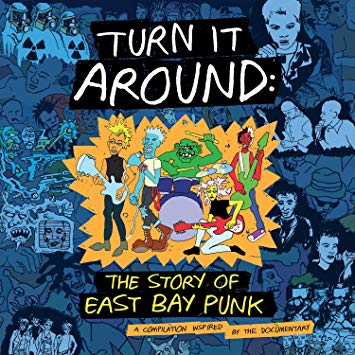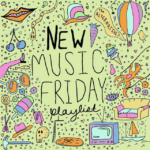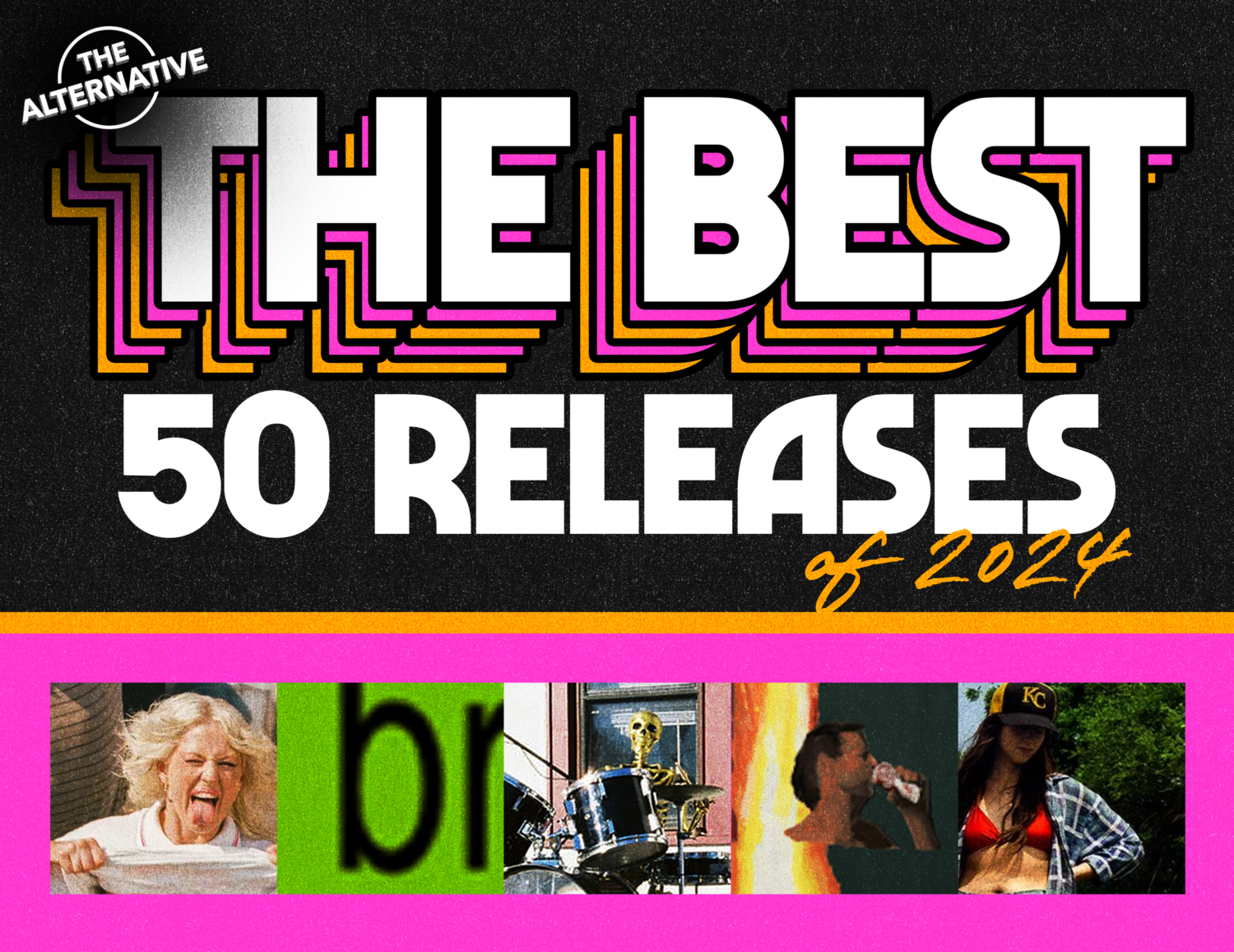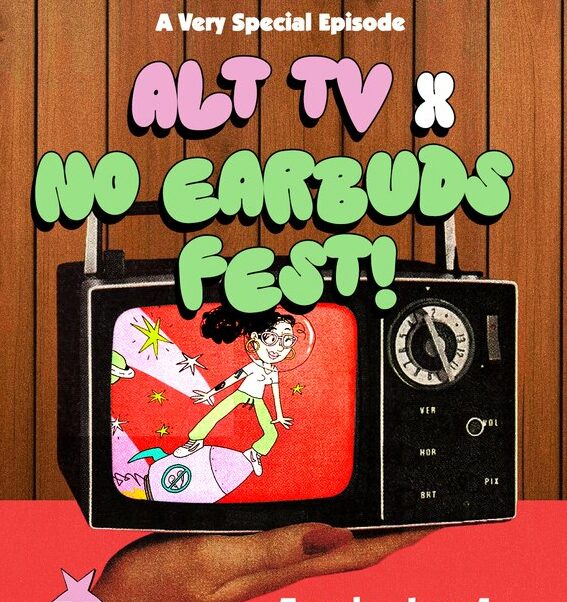Film Review: Turn It Around – The Story of East Bay Punk
Posted: by The Alt Editing Staff

Iggy Pop’s cool narration offers a sense of serenity over the otherwise chaotic tale of “fate, fight, and friendship” catalogued in Turn it Around: The Story of East Bay Punk. Over 150 interviews, hundreds of pictures, and loads of animated art and graphics flash on the screen during the documentary’s two and a half hour runtime. Not for the faint of heart or attention span, Corbett Redford’s passion project explores over 30 years of figures, music, and culture associated with East Bay’s punk scene, ultimately focusing on the real hub of it all: 924 Gilman in Berkeley, California.
I’ve been to 924 Gilman once before— I’ve seen all the iconic graffiti, used the doorless bathroom, and watched kids get kicked two blocks down for smoking weed. Standing next to the wall of rules (NO RACISM/NO SEXISM/NO HOMOPHOBIA+), the person working the door and I shouted back and forth over the crashing of drums and microphone feedback coming from the main space. A wall of merch tables were to my left when I walked into the main space and into a crowd of kids circled around the band on the floor. Modern day Gilman still finds itself attracting a similar audience as it did twenty years ago, but has progressed to booking all types of acts— it’s no longer the same venue that denied early Green Day a performance slot multiple times for sounding “too poppy.” Its core mission of providing a safe and sober haven for kids continues to shine just as it did when Tim Yohannan (RIP) opened the warehouse doors on New Year’s Eve of 1986.
The only collaborator on the doc that didn’t get plucked directly from the SF area is Iggy Pop. Scene contributors supplied the money, the history, the animation, the sound, the writing, and everything else that makes the film a landmark exploration of a decade’s long phenomenon– and boy, is it a deep dive. While prior knowledge of the community and its locations/people isn’t required for watching, casual viewers could easily interpret the continuous stream of information and scrappy editing as overwhelming. The well-intentioned plan to involve over 100 interviewees turns sour when the names and associations become laborious to retain, especially as bands begin to break up and familiar faces are re-introduced with new labels over and over again. Even though I can respect the dedication to preserving the DIY aesthetic of the mid-80s punk world, the shaky and often awkwardly-framed interviews become and disorienting after the 1.5 hour mark.
Where Greg Schneider (cinematographer/editor) falls short in clean, sharp camera work, he makes up for with the swift and sentimental editing. Cutting down nearly 500 hours of interview footage into a linear narrative requires intense dedication, and Schneider allows himself to take liberties to help meld together clips of talking heads, animations, and archival footage. For example, as buzzing, fuzzy retro Gilman footage cuts from the screen, the tainted-VCR effect remains over present-day interview footage, translating a feeling of complete submersion into the time period instead of just a surface-level analysis. Black and white film photographs of smiling, youthful teen faces often cut to a frame of that same person, 20 years older, as they recount the memories captured by the snapshot. Small choices like this further encapsulate the “you had to be there” spirit of 80s/90s punk that the film wants to embody.
Other than small interludes of narration, this is a recitation of a key movement in punk music history by the people that crafted and lived it. Names from all corners of the Bay network are featured. For those familiar with the scene, bands like Rancid, Operation Ivy, and Bikini Kill all have representatives that recount their experiences. Alongside them, those dubbed “scene participants” (volunteers/show attendees/people who beat up nazi skinheads) are given the opportunity to explain the invaluable nature of what they learned through their personal endeavors in Gilman’s evolution.
Speaking of Gilman’s evolution without mentioning the rise of “too poppy” Green Day would be a disservice, seeing as they could easily claim responsibility for solidifying East Bay Punk in mainstream conversation. As producers, Armstrong, Cool, and Dirnt are primary focuses of the documentary, and their origin story is presented almost as a case study in the transition from underground to celebrity. It sets up one of the main topics discussed in the latter half of the runtime: what does it mean to sell out? Punk culture prides itself on being self-made, and both then and now it feels taboo to mention any kind of commercialized success. Though their careers helped mold the story of this film (and funded it), Green Day’s launch into rockstardom gets glossed over, almost like it would be disrespectful to the culture to mention their worldwide notoriety. But in reality, it seems like everyone involved shares a similar sentiment. Booking agent Kamala Parks simply states, “If I’m gonna trust a band to make a shitload of money and still do the right thing— it’s [Green Day].
Each town, each suburb, each high school has people who feel like outcasts and are hungry for community just like the punks near the Bay. If one kid has the courage to start creating, anywhere has the potential to become the next best scene. With the amount of untapped talent in the world, there’s no reason any kid should feel alone anymore. The image of this idyllic world is planted in audiences as the film closes and Iggy Pop wistfully states, “It could be happening anywhere, but it should be happening EVERYWHERE.” Turn it Around is about the power a united front can have; it’s about the importance of art as expression and how anyone can “create their own culture.” It acts as a tribute to everyone who ever had a connection to Gilman + co. It’s a calling card to anyone who wants to be that initial voice to speak up. It’s a history lesson on one of the most prolific, powerful, and pure collaborations to happen in music. And that’s the story of East Bay punk.
—
Olivia Keasling | @shutup_olivia
The Alternative is ad-free and 100% supported by our readers. If you’d like to help us produce more content and promote more great new music, please consider donating to our Patreon page, which also allows you to receive sweet perks like free albums and The Alternative merch.










